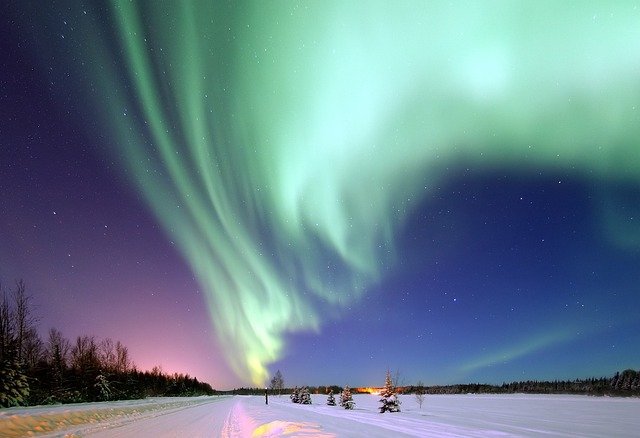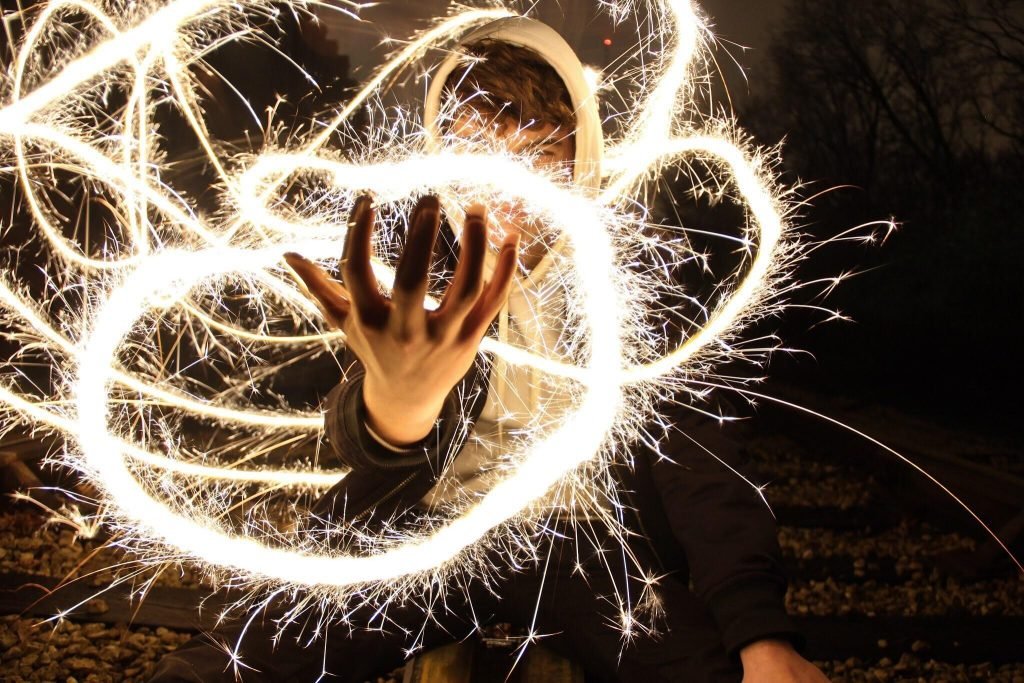Have you ever dreamed of seeing the breathtaking Northern Lights? You’ll be amazed to see the swirling colors of green, pink, and purple dancing across the sky. For many, this is a once-in-a-lifetime experience. But what if you could see the Northern Lights from a different perspective? From the comfort of an airplane, you can enjoy this natural wonder uniquely and unforgettably.
In this article, we will explore “how to see the northern lights when you fly”.
What Are The Northern Lights?
The Northern Lights, or aurora borealis, are a mesmerizing natural light show in the Earth’s sky. They occur when charged particles from the sun collide with gases in our atmosphere, producing colors like green, purple, and pink that dance across the night sky near the Earth’s poles.
Viewing this phenomenon from a plane provides a rare and unforgettable perspective. It allows passengers to witness these celestial colors from above the clouds, making it a truly magical experience.
When to Fly for the Best Chance of Seeing the Northern Lights?
Winter Months (September to April)
This is the best time to fly because it’s dark enough to see the aurora. During these months, the sun sets earlier, making it easier to see the Northern Lights. The nights are longer during these months, providing more opportunities to see the aurora.
Why Winter?
- The shorter days and longer nights in winter provide darker skies, which are ideal for seeing the Northern Lights.
- There is less light pollution during the winter months, making it easier to see the aurora.
How To See The Northern Lights From A Plane?
Here’s what to consider if you want to witness aurora lights:
Choose Northern Routes
Opt for flights that traverse regions near the Arctic Circle, such as Alaska, Canada, Iceland, Norway, Sweden, Finland, or Russia.
Fly in Winter Months
Aim for flights scheduled during the winter season when nights are longer, enhancing the visibility of the Northern Lights.
Clear Skies
Select flights on clear nights to ensure optimal viewing conditions without cloud cover obstructing your view.
Flight Timing
Research flight schedules to find departures and routes known for passing through Northern Lights regions during nighttime hours.
Seat Selection
Pick a window seat away from the airplane wing for the best views of the aurora borealis.
Northern Latitudes
Choose flights that pass over areas between 60 and 75 degrees north. These latitudes are where the Northern Lights are most frequently observed.
Flight Duration
Opt for longer flights, as they increase your chances of spending more time in regions where the Northern Lights are visible.
Flight Route Flexibility
Consider flexible booking options or airlines that offer routes specifically designed for Northern Lights viewing, such as special charter flights or tours.
Weather Monitoring
Keep an eye on weather forecasts and aurora borealis activity reports before booking your flight to maximize your chances of clear skies and optimal viewing conditions.
Aircraft Type
Some aircraft, particularly those with larger windows or fewer obstructions, may offer better views of the Northern Lights. Research the aircraft type if possible.
Camera Preparation
Adjust your camera settings in advance for low-light conditions to capture stunning photographs of the Northern Lights from the airplane window.
Flight Crew Assistance
Inform the flight crew of your interest in seeing the Northern Lights; they may offer helpful tips or even announce when the lights are visible during the flight.
Solar Activity
Look for flights with high solar activity, which increases the chance and intensity of the Northern Lights.
How Solar Activity Affects the Northern Lights?
- High solar activity can cause the Northern Lights to become more intense and vibrant.
- The aurora can display more colors during periods of high solar activity.
- High solar activity can lead to more frequent and intense auroral displays.
By following these guidelines, you can increase your chances of seeing the Northern Lights from a plane.
Where In The World Can You See An Aurora Borealis From A Plane?
You can see the aurora borealis from a plane when flying over northern regions like Alaska, northern Canada, Greenland, Iceland, Norway, Sweden, Finland, and Russia. These areas are closer to the Earth’s poles where the Northern Lights are most visible. The best times to see them from a plane are during the winter months when nights are longer and the skies are clearer.
How Seeing The Northern Lights From A Plane Is Different From Seeing Them From Ground?
Seeing the Northern Lights from a plane gives a unique view compared to seeing them from the ground. Passengers see the aurora borealis spread across the sky, showing its full scale and beauty. The plane’s altitude often gives clearer views above clouds that can block the lights from the ground. This view allows a wide, unblocked look at the aurora’s colors and patterns dancing in the sky.
The plane’s movement adds another layer to the experience. As it travels, passengers see the Northern Lights shift and shimmer from different angles, creating a dynamic display. Unlike on the ground, where visibility can be hindered by local weather or timing, flights offer a longer chance to see the aurora, depending on the route and timing.
Seeing the Northern Lights from a plane also offers comfort and protection from outdoor elements. Passengers can enjoy the spectacle in a controlled environment with amenities that improve the experience. Overall, viewing the Northern Lights from a plane gives a special perspective highlighting this natural phenomenon’s amazing beauty.
Tips for Photographing the Northern Lights from a Plane
- Use a camera with a wide-angle lens to capture the full spectrum of colors in the aurora.
- Set your camera to a long exposure to capture the vibrant colors of the Northern Lights.
- Steady your camera by pressing the lens against the window as flat as possible to avoid reflections.
- Use a tripod or Joby-style mount on your tray table for stability.
- Cover your head and the window with a blanket or jacket to block out cabin light and reflections.
- Cover any light sources in the cabin to avoid reflections and interference with your photos.
- Choose a camera that performs well in low light conditions to capture the Northern Lights effectively.
- Experiment with different camera settings to find the best combination for capturing the Northern Lights.
- Take multiple shots to ensure you capture the aurora in all its glory.
By following these tips, you can capture stunning photos of the Northern Lights from the comfort of your plane seat.
Conclusion
In conclusion, seeing the Northern Lights from a plane gives you a special view of this natural wonder. From high above, you get a clear, unobstructed look at the colorful lights dancing across the sky. Unlike seeing them from the ground, flying offers longer chances to witness them, especially in winter when the skies are clearest.
This unique way of viewing also keeps you comfortable and protected. Whether you’re taking photos or just enjoying the sight, flying over places like Alaska, Canada, Iceland, or Scandinavia during active solar periods increases your chances of seeing this amazing sight. Take advantage of this opportunity to see the Northern Lights in a whole new way and make memories you’ll treasure.



